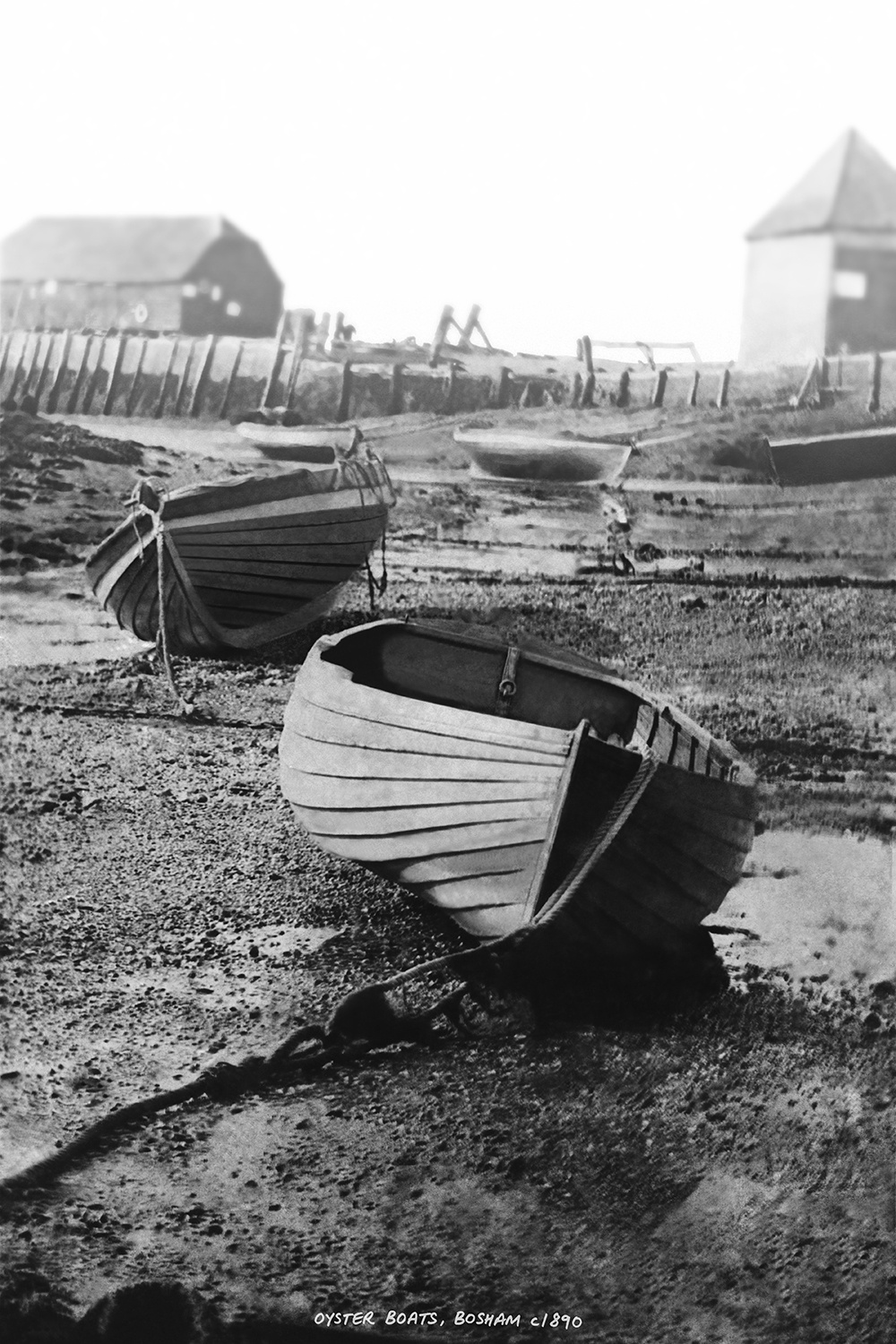Hi there! Let's keep in touch... please add your comments below the articles...
-
Emsworth & Bosham's Oyster Ponds In The 19th Century
Archive Reference: BGA1652 Oyster Boats, Bosham, Sussex, England c1890
Oyster Boats, Bosham, Sussex, England c1890Longer read...
At the end of the nineteenth century, Bosham's oyster fishery was booming, and there was a huge demand for oysters in London, where it is estimated that a staggering 144 million were sold each year. The oyster ponds were located along the foreshore of Bosham's two creeks, either side of the Quay. The oysters needed a great deal of care to protect them from growing over each other, and smothering the smaller ones, which caused suffocation, and the fishermen would continually walk or row out to the ponds to monitor their growth. They were constantly sorting and grading them, and removing mud and seaweed from the ponds, which could also suffocate them.
Bosham's oyster boats, pictured here, were built in the village. They were wide rowing boats with low sides to allow the fishermen to easily dredge and use a net. A cross between a fork and a rake was used to scoop the oysters out of the ponds, into buckets or bags. They were brought ashore and packed into baskets and taken by horse and cart to the railway station, one mile to the north. The majority of Bosham's oysters were sold in fish markets in Portsmouth, Southampton, Brighton, Winchester, Hove, Guildford and various boroughs of London.
As well as using these rowing boats to manage the oyster ponds, fishermen would have used them to fish for shrimp in shallow waters within Bosham's creeks.
-
Chichester Harbour's Booming Oyster Industry In The 19th Century
Archive Reference: BGA820 The Quay, Bosham, Sussex, England c1905
The Quay, Bosham, Sussex, England c1905Longer read...
Perhaps the most interesting passage of Chichester Harbour's oyster history is the story of the fishery during the nineteenth century when we saw the emergence of oyster merchants such as James Duncan Foster in Emsworth and William Yetman in Bosham, who established an early form of factory farm fishing to take advantage of the arrival of the railways in 1846, which significantly expanded markets for local fishermen, and shortened delivery times dramatically. Their fishing fleets built much larger oyster boats that could stay at sea longer and carry larger cargoes of fish, and produced better quality oysters by using oyster ponds to manage their growth and allow the oysters to cleanse before they were sent to market. By the end of the nineteenth century, oysters had been elevated from a subsistence food for the lower classes to a prized delicacy of the upper classes. The story of Chichester Harbour's oysters through the centuries is fascinating...